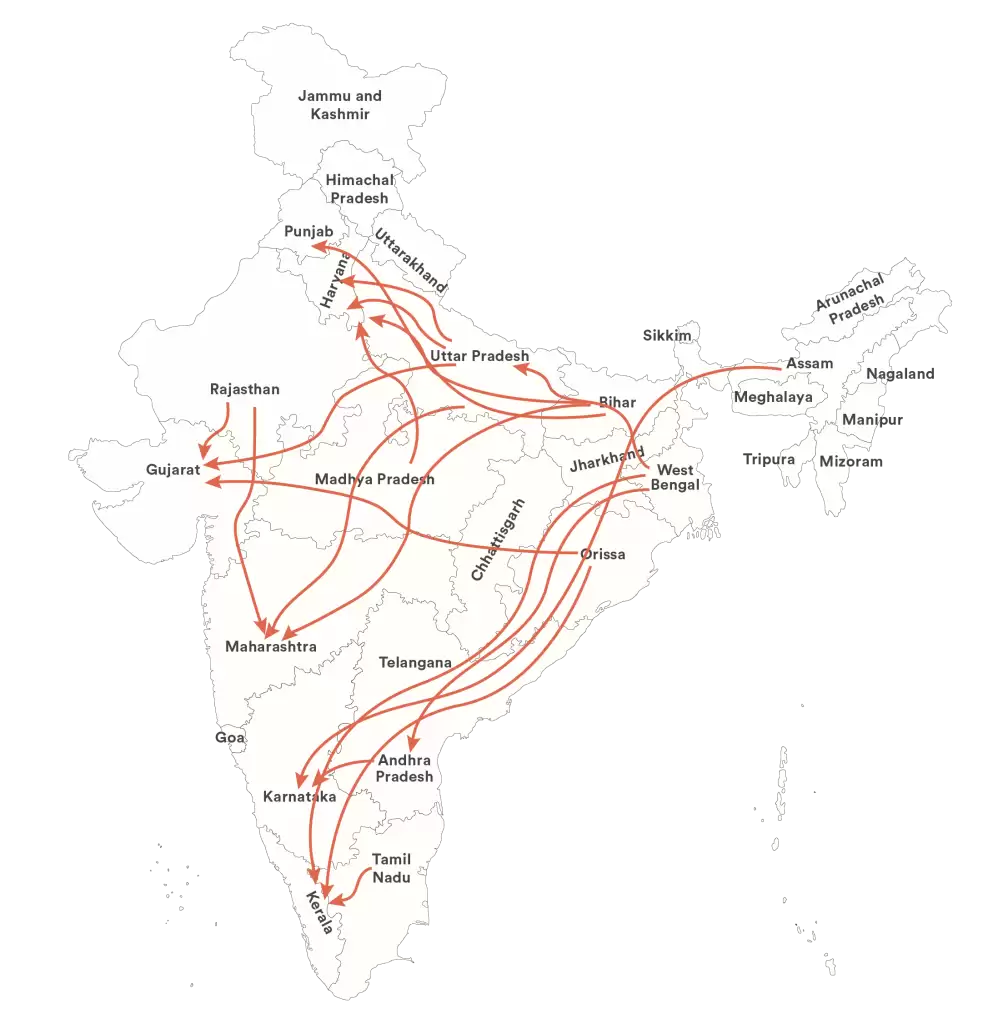Labour
Migration
Labour Migration
Movement of workers happens from impoverished rural regions to the more affluent urban and industrial pockets. The historically established list of out-migration regions such as UP, Bihar and Jharkhand has expanded to include states such Rajasthan, Odisha, Madhya Pradesh.
Poor wages, erratic employment, hazardous work conditions and lack of essential services define the experience of migrant workers. Access to public entitlements is largely linked to proof of residence which migrants are unlike to possess – this results in their exclusion from subsidized food-grains, housing, health care and other benefits available to local citizens. Migrants survive on the margins, i.e. on construction sites, brick kilns or polluted manufacturing zones on the peripheries of cities. When they live within the city, it is often in informal settlements, that are deemed illegal by civic authorities, and hence placed outside planning and provisioning.


